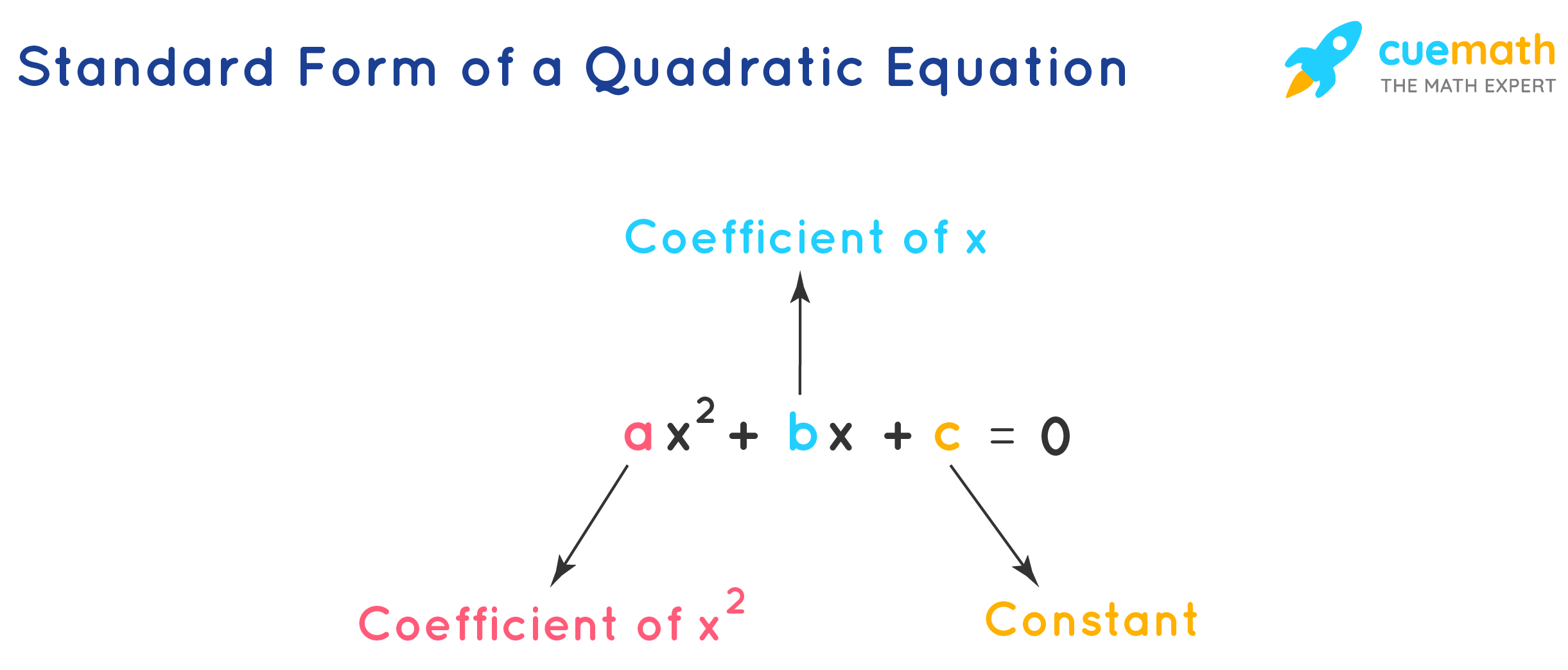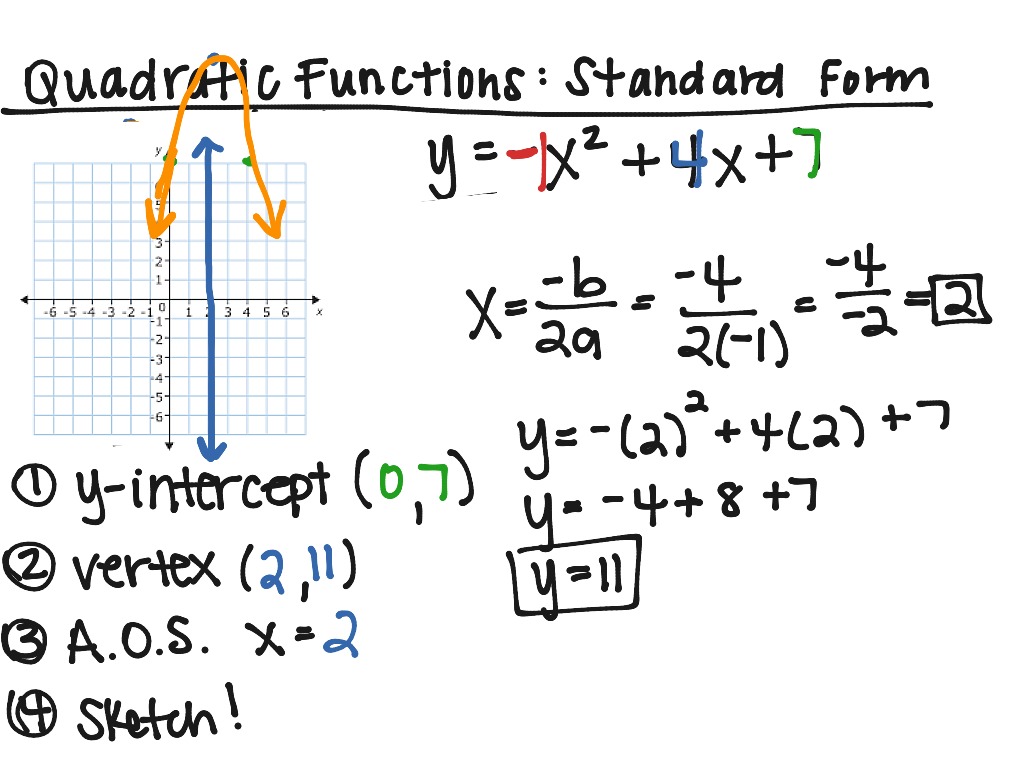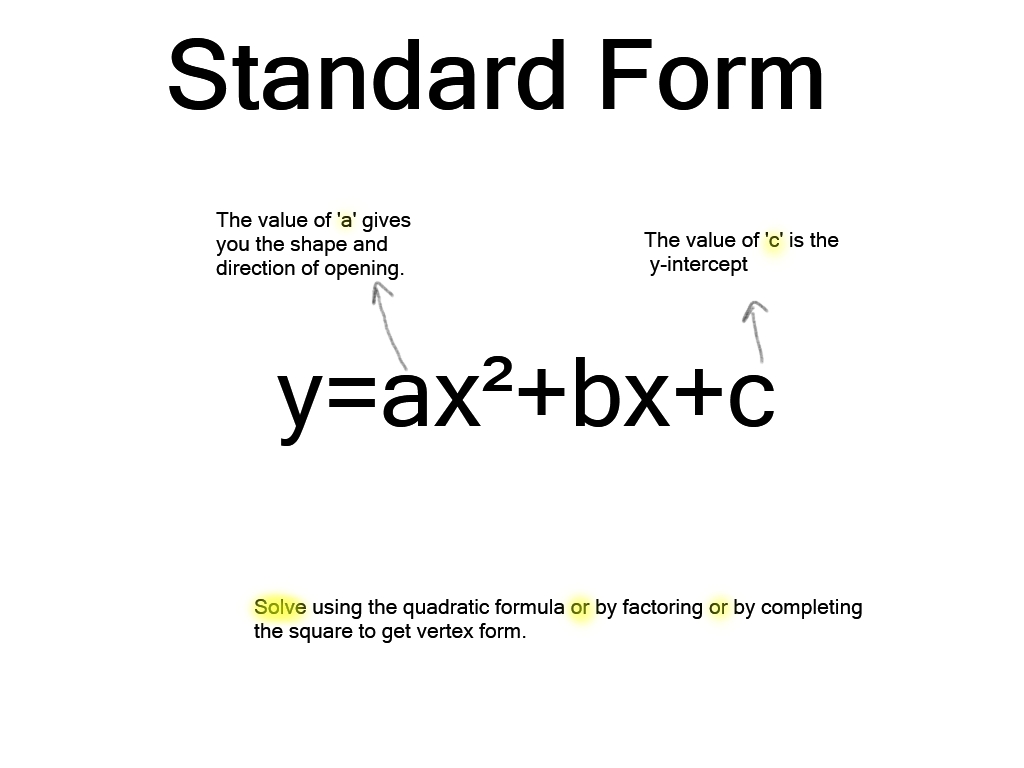Standard Form Quadratic Function
Standard Form Quadratic Function - Use a graphing utility to verify your result. Write the standard form of the quadratic function that has the indicated vertex and whose graph passes through the given point. F(x) = x^2 + 6x − 1 state the vertex and axis of symmetry of the graph of the function. Use the method of completing the square to find the standard form of the quadratic function. Y= axis of symmetry x= vertex(x, y)= answer by edwin. Find the vertex, the intercepts, and graph the quadratic function (label vertex & intercepts) write the standard form of the quadratic function. So, this is the standard form. Standard form is also known as vertex form and is written as we can expand our quadratic from above and then. Add this square to both sides of the equation.
Use a graphing utility to verify your result. Standard form is also known as vertex form and is written as we can expand our quadratic from above and then. So, this is the standard form. Y= axis of symmetry x= vertex(x, y)= answer by edwin. Use the method of completing the square to find the standard form of the quadratic function. Write the standard form of the quadratic function that has the indicated vertex and whose graph passes through the given point. Find the vertex, the intercepts, and graph the quadratic function (label vertex & intercepts) write the standard form of the quadratic function. Add this square to both sides of the equation. F(x) = x^2 + 6x − 1 state the vertex and axis of symmetry of the graph of the function.
F(x) = x^2 + 6x − 1 state the vertex and axis of symmetry of the graph of the function. Write the standard form of the quadratic function that has the indicated vertex and whose graph passes through the given point. Use a graphing utility to verify your result. Standard form is also known as vertex form and is written as we can expand our quadratic from above and then. Find the vertex, the intercepts, and graph the quadratic function (label vertex & intercepts) write the standard form of the quadratic function. Use the method of completing the square to find the standard form of the quadratic function. Y= axis of symmetry x= vertex(x, y)= answer by edwin. So, this is the standard form. Add this square to both sides of the equation.
How To Write Quadratic Equations In Standard Form CAREER KEG
Use the method of completing the square to find the standard form of the quadratic function. Write the standard form of the quadratic function that has the indicated vertex and whose graph passes through the given point. Find the vertex, the intercepts, and graph the quadratic function (label vertex & intercepts) write the standard form of the quadratic function. So,.
Standard Quadratic Form Writing a quadratic function in standard form
Add this square to both sides of the equation. F(x) = x^2 + 6x − 1 state the vertex and axis of symmetry of the graph of the function. Find the vertex, the intercepts, and graph the quadratic function (label vertex & intercepts) write the standard form of the quadratic function. Write the standard form of the quadratic function that.
Ex2 Write a Quadratic Function in Standard Form to Graph (a not 1
Standard form is also known as vertex form and is written as we can expand our quadratic from above and then. Y= axis of symmetry x= vertex(x, y)= answer by edwin. Add this square to both sides of the equation. Find the vertex, the intercepts, and graph the quadratic function (label vertex & intercepts) write the standard form of the.
Quadratic Functions Standard Form Math ShowMe
Write the standard form of the quadratic function that has the indicated vertex and whose graph passes through the given point. Standard form is also known as vertex form and is written as we can expand our quadratic from above and then. Add this square to both sides of the equation. Use the method of completing the square to find.
Ex1 Write a Quadratic Function in Standard Form to Graph YouTube
Y= axis of symmetry x= vertex(x, y)= answer by edwin. Use the method of completing the square to find the standard form of the quadratic function. Add this square to both sides of the equation. F(x) = x^2 + 6x − 1 state the vertex and axis of symmetry of the graph of the function. So, this is the standard.
Standard Form Learning QUADRATICS
Add this square to both sides of the equation. Y= axis of symmetry x= vertex(x, y)= answer by edwin. Write the standard form of the quadratic function that has the indicated vertex and whose graph passes through the given point. Standard form is also known as vertex form and is written as we can expand our quadratic from above and.
Quadratic Functions Presentation Mathematics
So, this is the standard form. F(x) = x^2 + 6x − 1 state the vertex and axis of symmetry of the graph of the function. Add this square to both sides of the equation. Use the method of completing the square to find the standard form of the quadratic function. Write the standard form of the quadratic function that.
Writing a quadratic function in standard form (college algebra) YouTube
F(x) = x^2 + 6x − 1 state the vertex and axis of symmetry of the graph of the function. Use the method of completing the square to find the standard form of the quadratic function. Y= axis of symmetry x= vertex(x, y)= answer by edwin. Find the vertex, the intercepts, and graph the quadratic function (label vertex & intercepts).
Different Forms of Quadratic Equation with Examples
So, this is the standard form. F(x) = x^2 + 6x − 1 state the vertex and axis of symmetry of the graph of the function. Use the method of completing the square to find the standard form of the quadratic function. Y= axis of symmetry x= vertex(x, y)= answer by edwin. Add this square to both sides of the.
Equation of a Quadratic Function in Standard Form YouTube
Add this square to both sides of the equation. Write the standard form of the quadratic function that has the indicated vertex and whose graph passes through the given point. Use a graphing utility to verify your result. So, this is the standard form. Standard form is also known as vertex form and is written as we can expand our.
Y= Axis Of Symmetry X= Vertex(X, Y)= Answer By Edwin.
Find the vertex, the intercepts, and graph the quadratic function (label vertex & intercepts) write the standard form of the quadratic function. Use a graphing utility to verify your result. Add this square to both sides of the equation. So, this is the standard form.
F(X) = X^2 + 6X − 1 State The Vertex And Axis Of Symmetry Of The Graph Of The Function.
Write the standard form of the quadratic function that has the indicated vertex and whose graph passes through the given point. Standard form is also known as vertex form and is written as we can expand our quadratic from above and then. Use the method of completing the square to find the standard form of the quadratic function.






.PNG)


